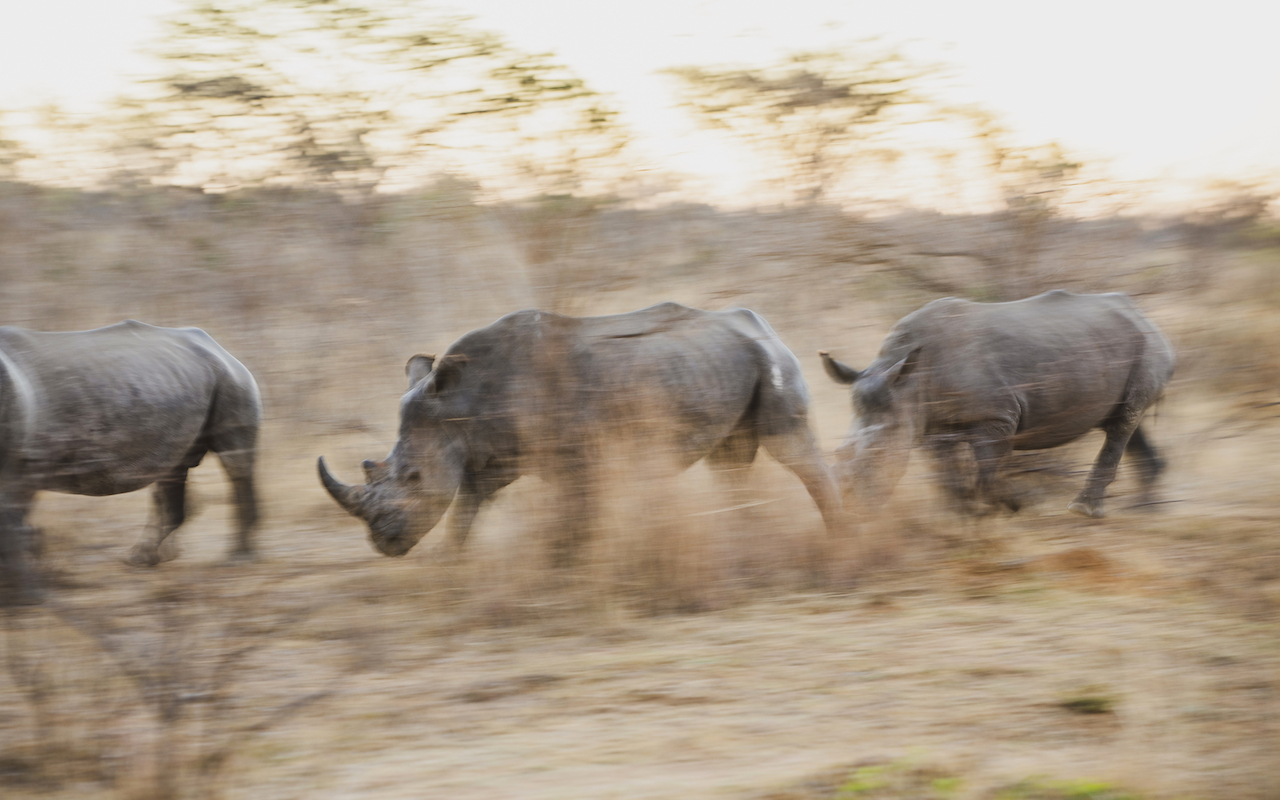
There’s a traffic jam on the Welgevonden Game Reserve in South Africa’s Waterberg Mountains.
It is 6:30am. The sun is slowly rising, casting the surrounding bushveld in a warm amber glow, and there isn’t another safari vehicle for miles. Yet, we are stuck.
In front of us, a stout white rhinoceros and her tiny calf stand chewing on grass that sprouts from the side of the sandstone track. They move languidly, unperturbed by our presence, lingering in patches of mottled sunlight as the morning begins to heat up. A red-billed oxpecker lands on the mother’s back, searching for parasites and ticks on her leathery hide, but otherwise all is still. So goes the pace of life on the reserve.
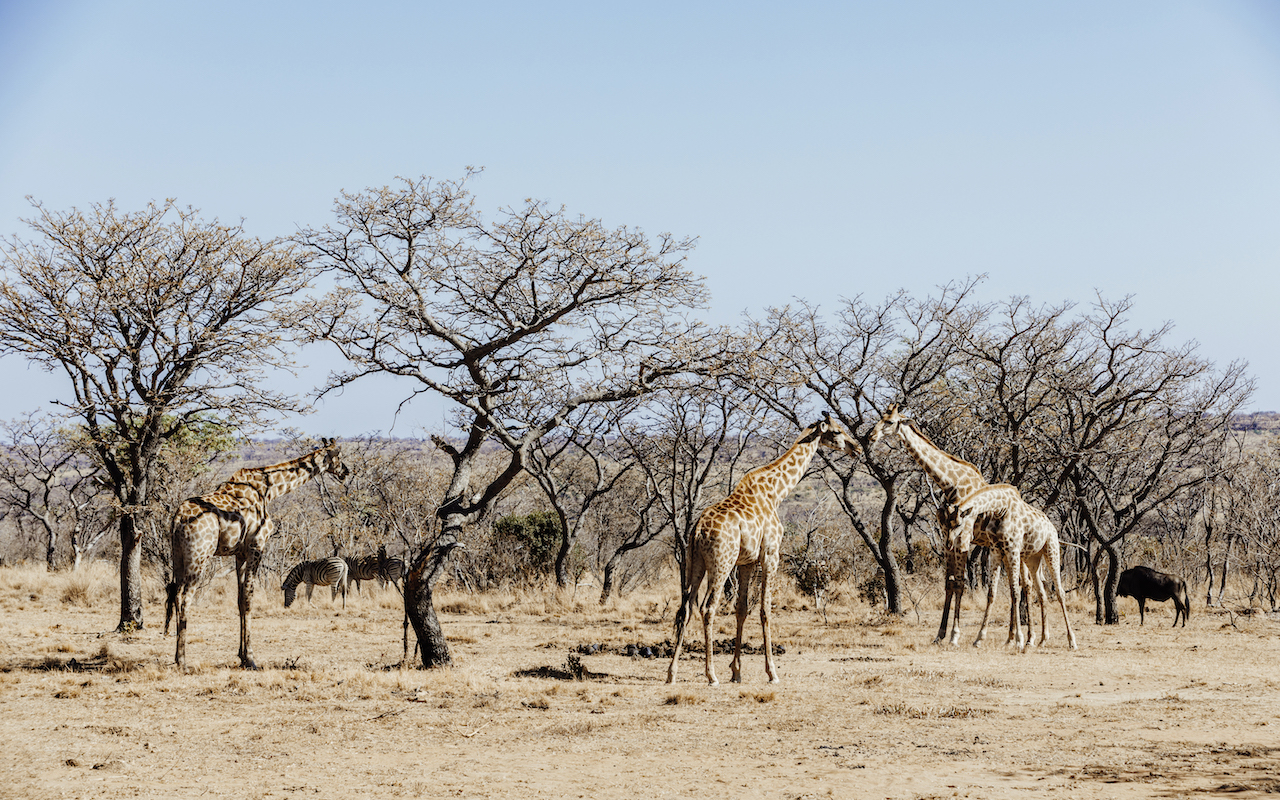
I had presumed that spotting these threatened creatures would be a challenge, but it’s been half an hour since we left Makweti – one of the 23 commercial safari lodges here – and these are the fifth and sixth rhinos we’ve encountered on the reserve, which stretches 360km2 and lies three hours north of Johannesburg in the Unesco-listed Waterberg Biosphere.
Seeing them up close, I feel as if I’m watching dinosaurs: there’s something almost prehistoric about the rhino’s build, a hard-to-pinpoint wisdom in their demeanour, the long horn at the end of their snouts curving skyward and lending them an almost comical expression. Which is ironic, because it is those horns – or more accurately, the value humans have placed on them – that have put the world’s rhino population in peril.
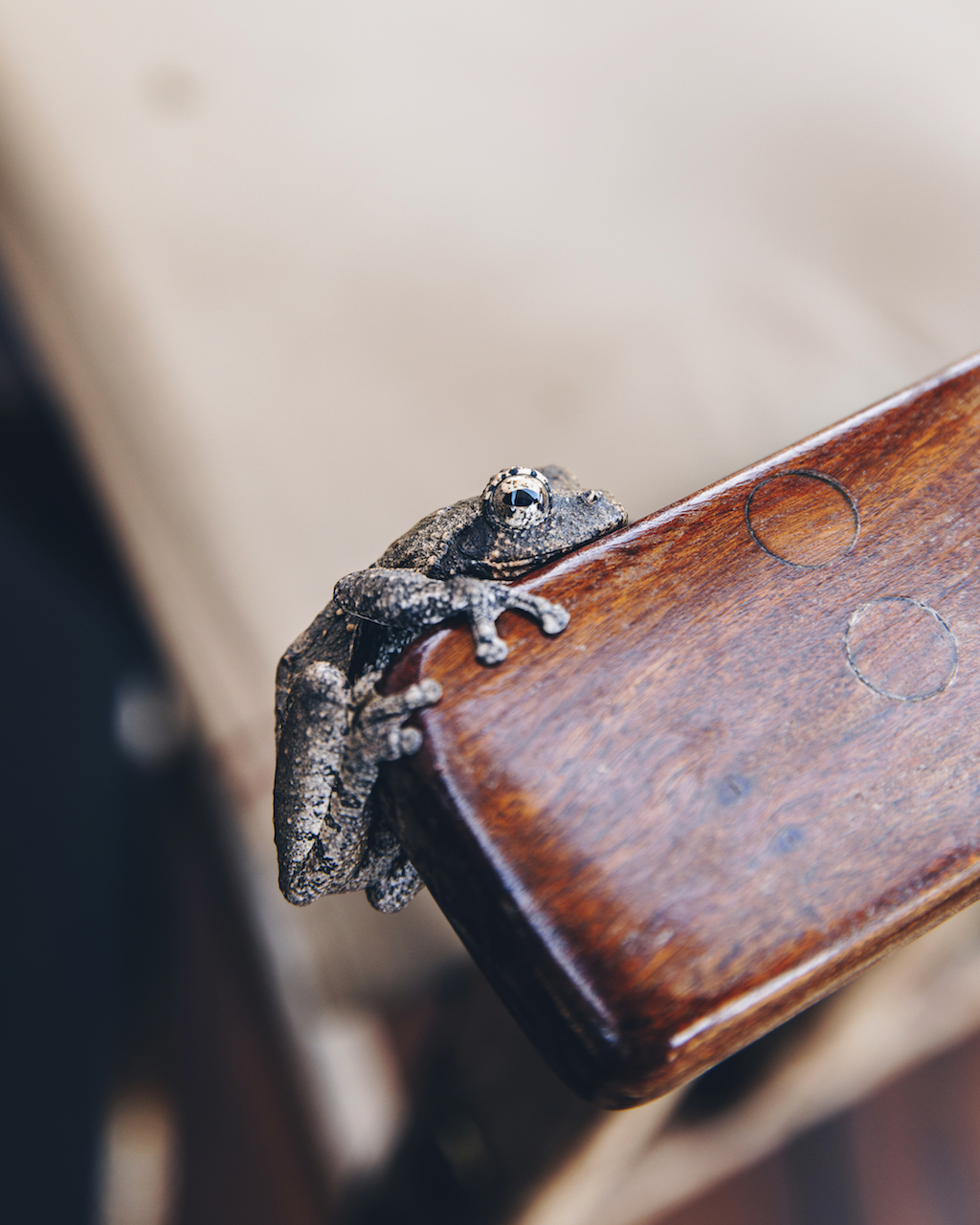
As the target of poachers, who sell their precious horns (actually made from keratin, the same protein found in human hair and fingernails) on the black market for use in traditional Asian medicines, they are under serious threat. According to the IUCN’s (International Union for Conservation of Nature) Red List of Threatened Species, of the two rhino species that once roamed wild across much of sub-Saharan Africa, the black rhino is critically endangered, while the white rhino is near threatened.
Between 2007 and 2014, the number of rhinos poached in South Africa per year increased from 13 to 1,215 – a spike of over 9,000% – and despite seeing a slight reduction in that number to 1,028 in 2017, more clearly still needs to be done, especially as the country is home to 80% of the world’s 29,000 remaining rhinos. So: how do you tackle rhino poaching?
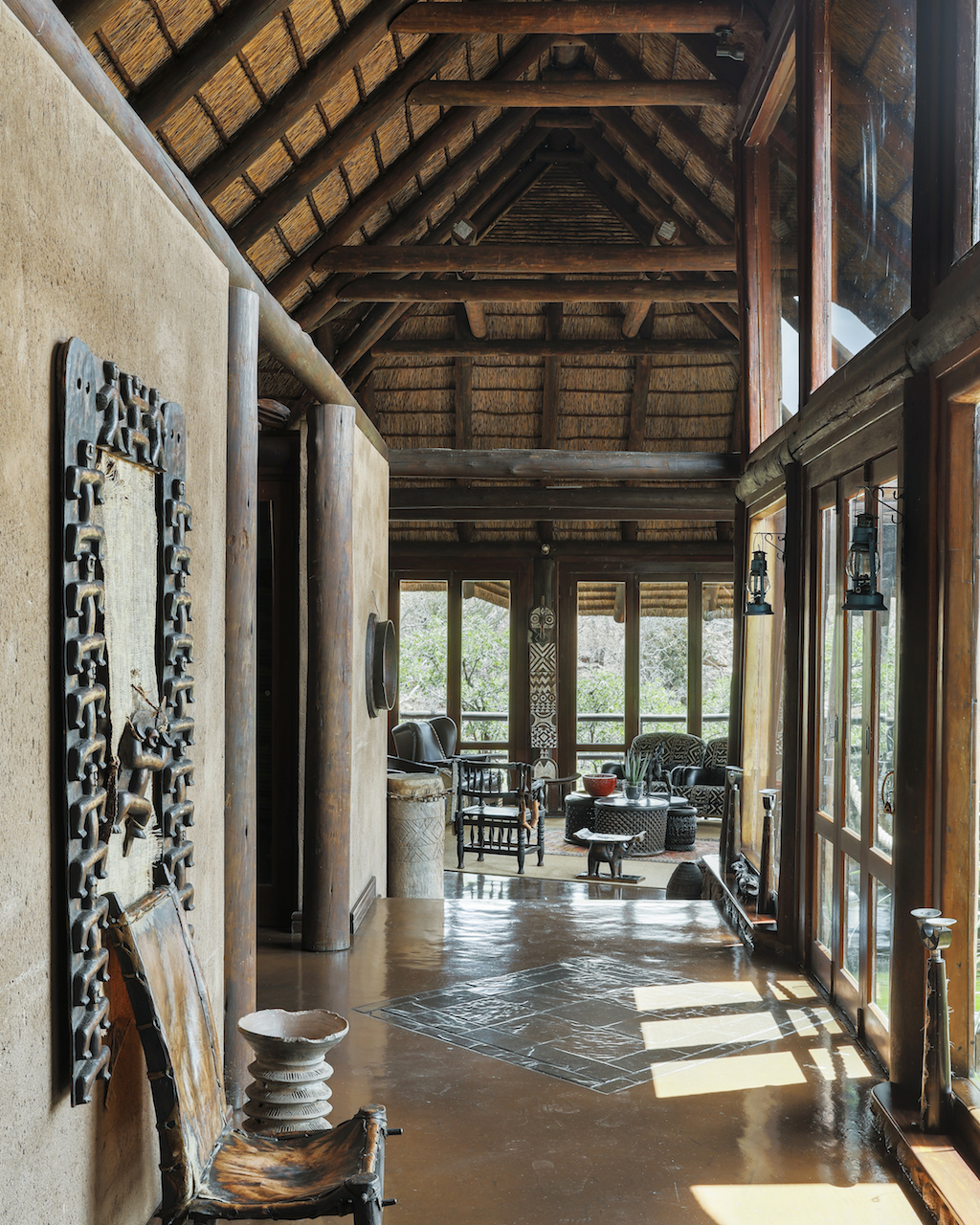
“That was the challenge we were facing,” recalls 58-year-old Shaun McCartney, Welgevonden’s sprightly, salt-and-pepper-haired CEO. Considered within conservation circles to be one of the world’s best-managed reserves, Welgevonden operates on the philosophy that private game reserves have a responsibility to protect Africa’s biodiversity. “We wanted to come up with a real solution, one that we could develop and share with the rest of the world,” McCartney says. “More importantly, we wanted to do something preventative instead of reactive.”
That ethos led Welgevonden to foster a relationship with Herbert Prins – a leading ecologist based at Wageningen University in the Netherlands. “In 2015 we were working with Prins on the Plains Project, a scheme to create self-sustaining grazing lawns on our savannah, because the reserve’s base rock is so nutrient-poor,” explains André Burger, the chief operating officer of Welgevonden who has worked here for 22 years and whose knowledge of the area is encyclopedic. That project had involved putting GPS collars on several species of grazing animals to monitor their movements.
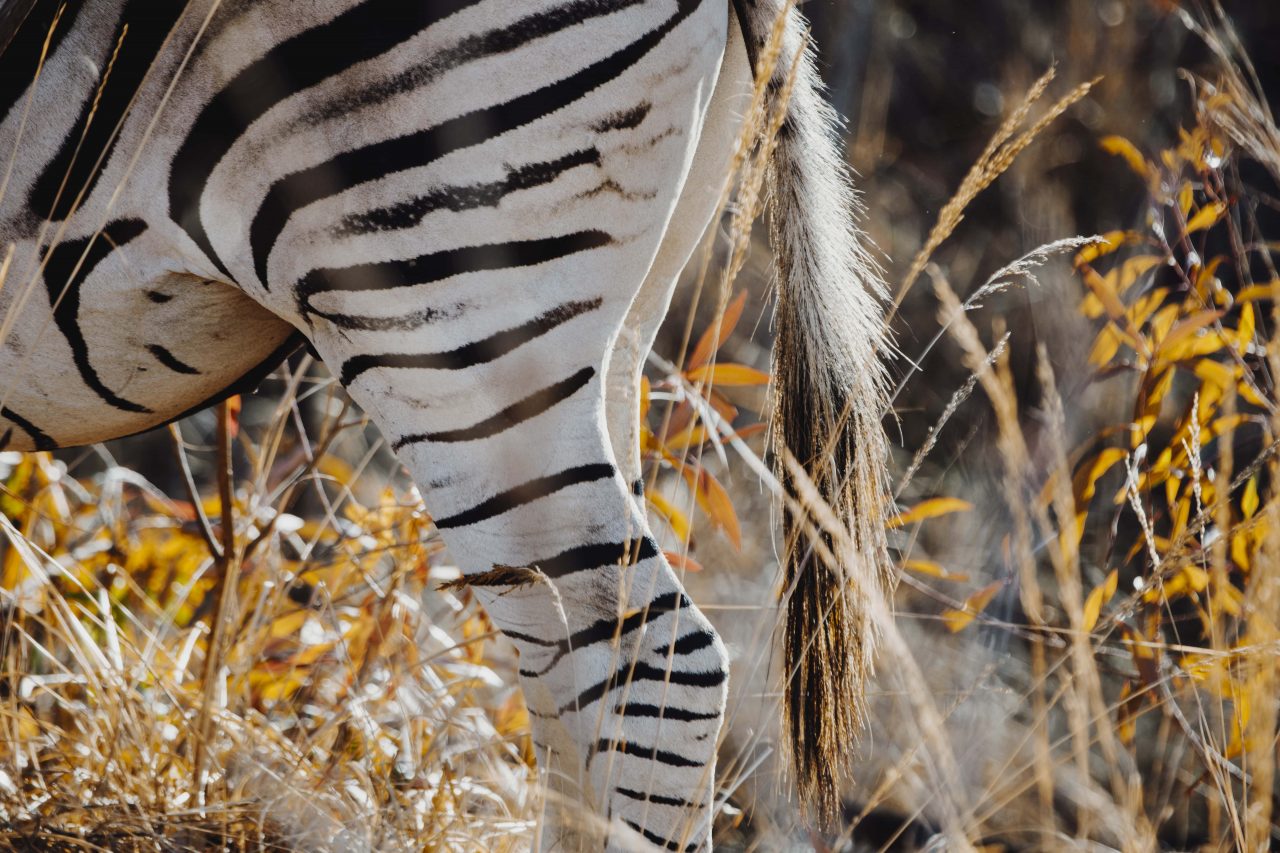
During their observations, the team noticed that the animals’ behaviour changed significantly when they encountered predators. “It got us thinking: what if we could harness that information as a warning sign for when poachers entered the reserve?” Burger says.
GPS collars had been used to locate animals at risk of poaching before, but by the time the data showed a change of behaviour, the creature had already been killed. Instead, Prins developed the theory that by closely monitoring sentinel prey animals – wildebeest, zebra, impala – which are found in much higher numbers than rhinos within the reserve, and were not the target of poachers themselves, the team could begin to study what they were reacting to, and use predictive analytics to anticipate a crime before it ever occurred.
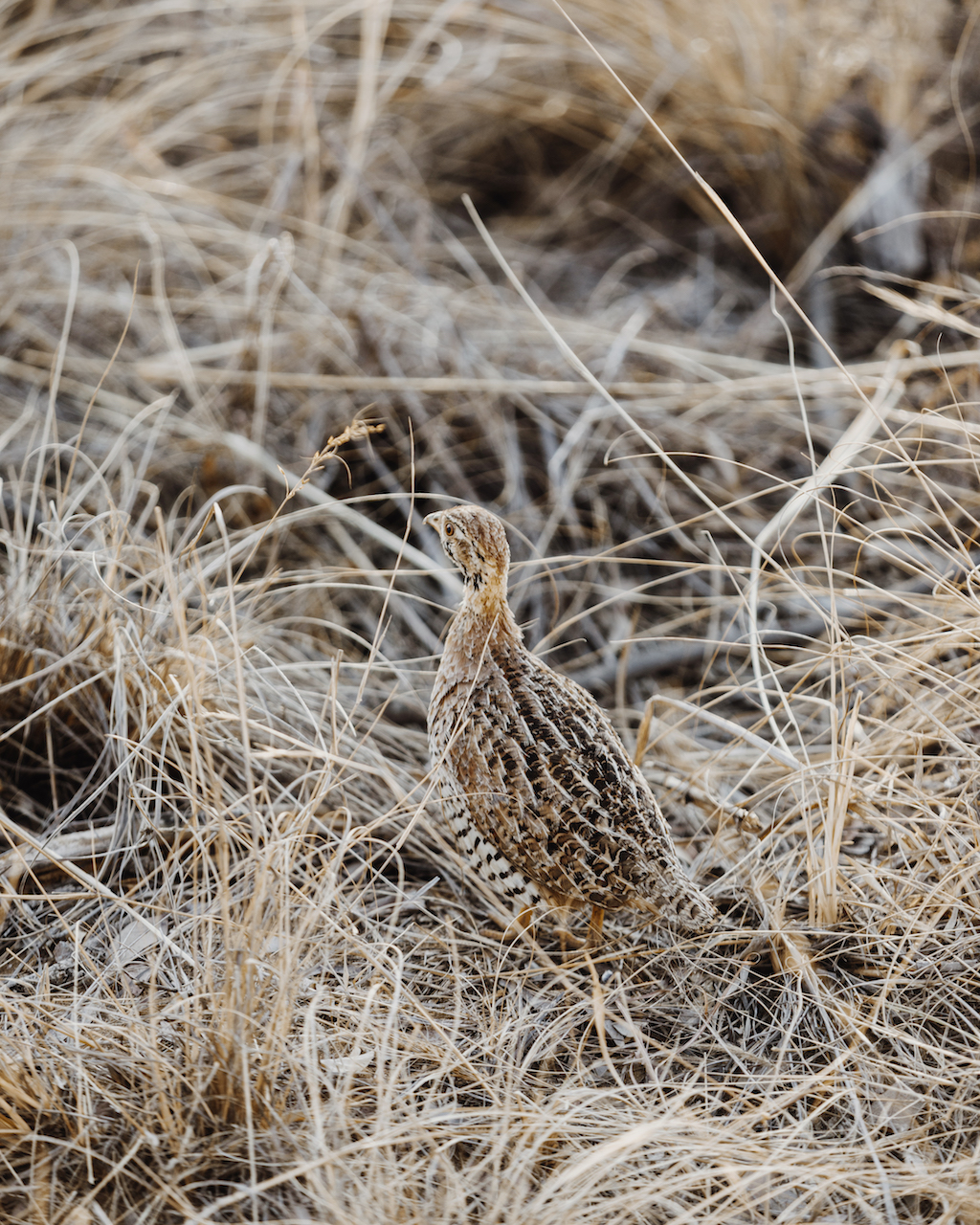
“Essentially,” Burger says, “if we could monitor these animals and learn to identify when they were reacting to a threatening human presence, we could begin to gauge when and where a poacher had entered the reserve and intercept them before they even got close to a rhino.”
The team set about formulating a high-tech concept to test in Welgevonden’s breeding camp, a 1.2km2 stretch of scrub vegetation located on the outer edge of the reserve where prey species roam predator-free while they reproduce, before being introduced into the wider reserve. But they needed more expertise, and specialist hardware. Securing funding from the Dutch government, they also enlisted cellular company MTN and global tech firm IBM.
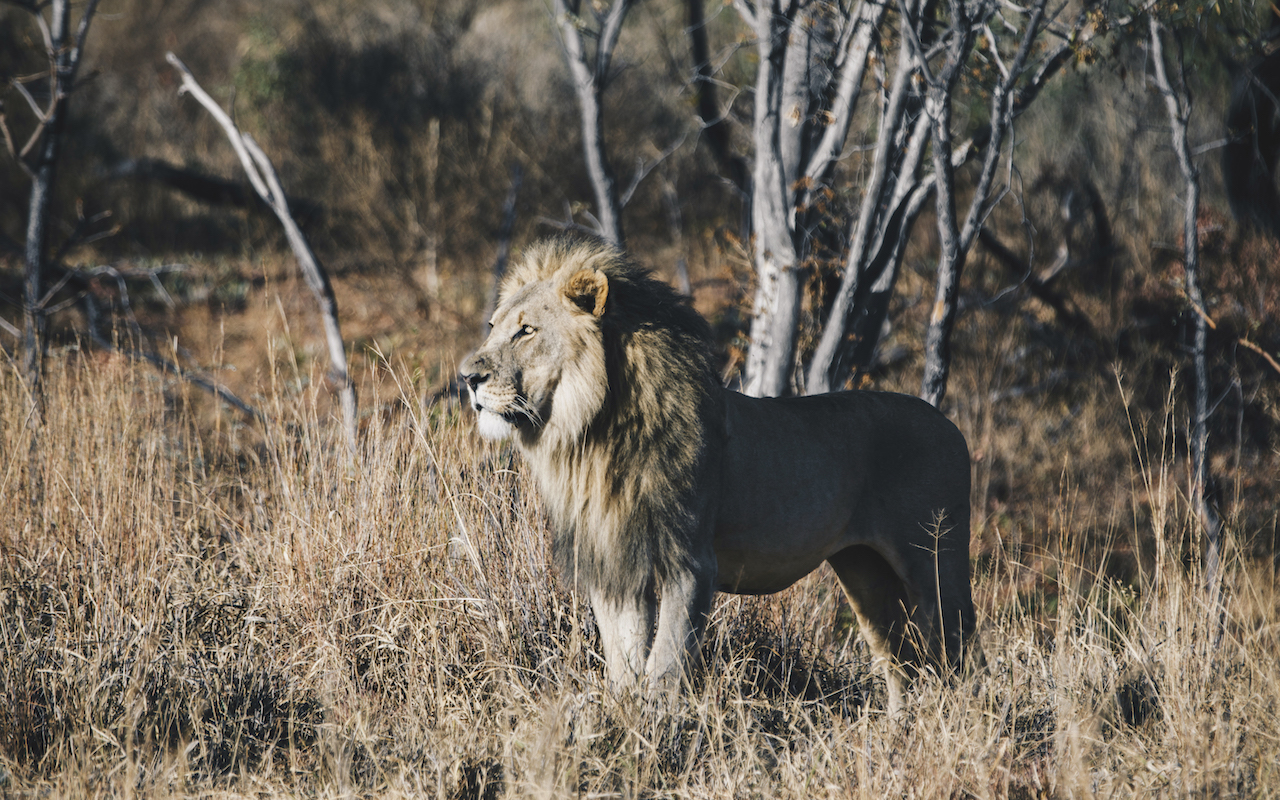
There were multiple challenges to face: traditional GPS uses a predictive behavioural mechanism – as anyone who has been told by a SatNav to make a U-turn will attest – which didn’t tally with an animal’s instinctive movements, so a whole new programme had to be written. In addition, where previous collar data was being transmitted every four hours, now the team needed more complex information every three or four seconds.
“Did the animal lift its head quickly or slowly? Did it look left or right? How quickly did it accelerate? All of that information was integral for this to work,” Burger explains. MTN installed five solar-powered towers in the reserve which would transmit the collar data to the IBM Cloud via a long-range network, creating an internet of things – a network of objects that are fitted with microchips and connected to the internet, enabling them to interact with each other.
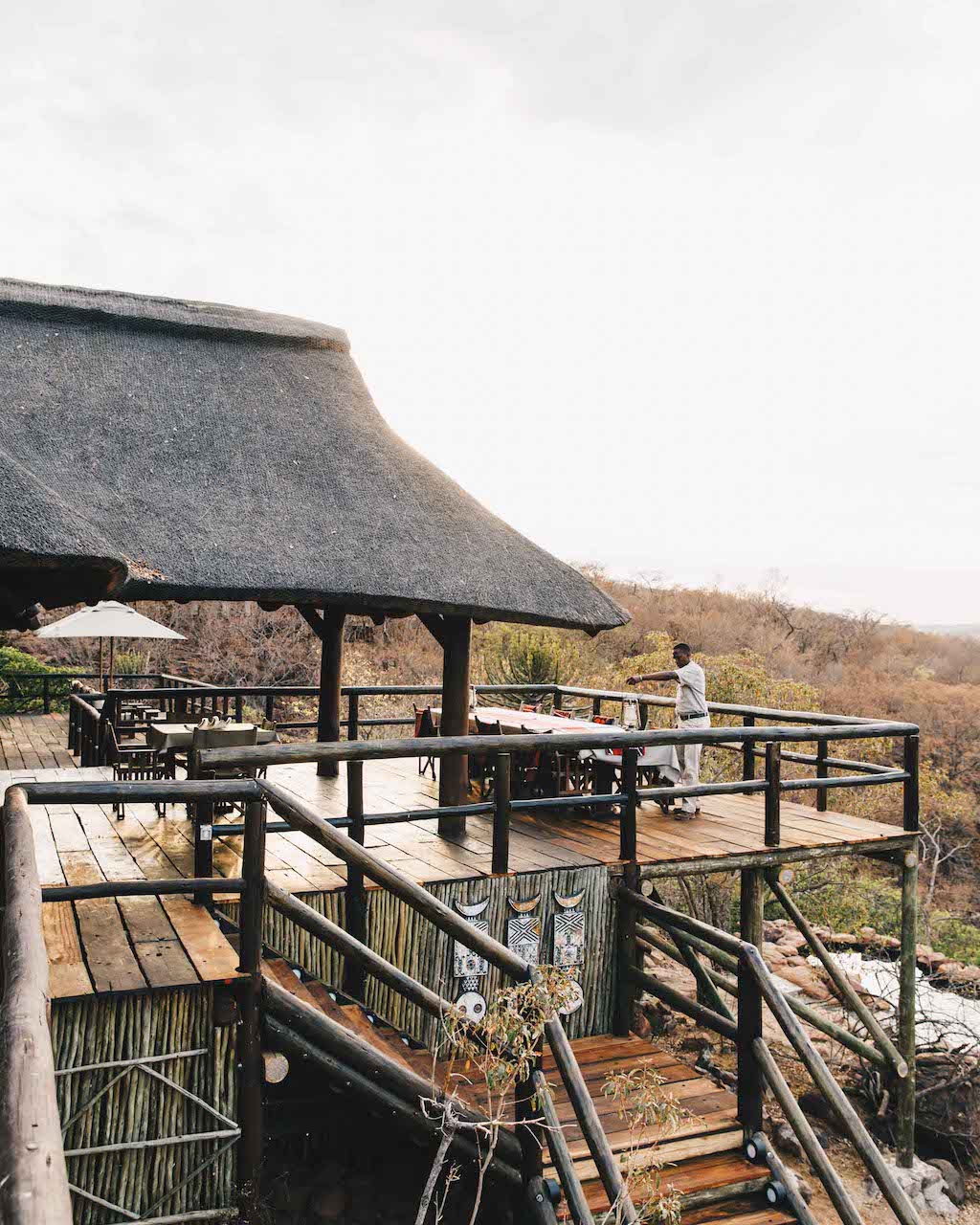
In late 2017, the tests commenced. For 12 months, 134 sentinel animals including zebras, eland and impala were collared as they roamed through the bush, and their reactions to thousands of stimuli monitored, from typical eco-tourism activities such as game drives and bush walks to unexpected people on foot, hiding in the bush, carrying weapons and more.
“Nature isn’t on our doorstep at Makweti – we are very much on its”
Seasons came and went: winter’s arid, dusty months gave way to summer’s verdant oasis, the animals feasting on the sweet green shoots that erupted from the ground. Through it all, the data accumulated, and Prins and his team saw intricate patterns emerging from which an algorithm could be built. By monitoring and learning the minutiae of these animals’ behaviour, they were able to identify when and where suspicious or threatening activity was taking place in real time.
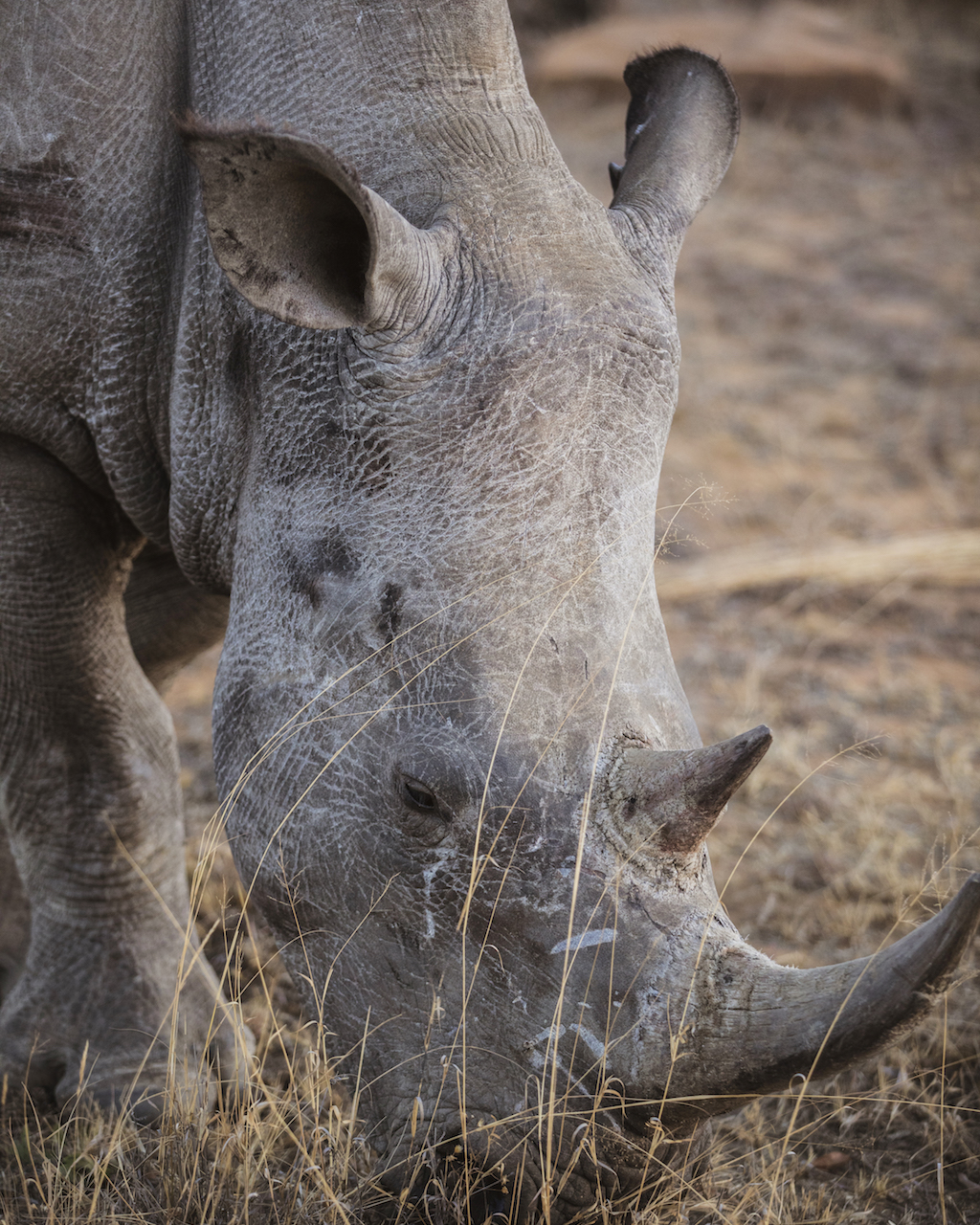
Now they had an algorithm that, via chipped or collared animals, could alert them when a poacher was on the reserve. This gave them time to launch a drone to assess the situation, and deploy security to intercept the intruder before a rhino could be killed. The Wildlife Protection Project was born, and today, the team is making plans and raising funds to roll it out across the entire reserve by the end of 2020.
On the ground at Welgevonden, it’s an exciting prospect. Neil Davison, the 42-year-old head guide at Makweti who takes us on our twice-daily game drives, sees it as a chance for the animals to win back the advantage. “When mobile technology arrived, suddenly people were able to geo-tag rhinos’ locations for poachers to find,” the Johannesburg-born guide explains.
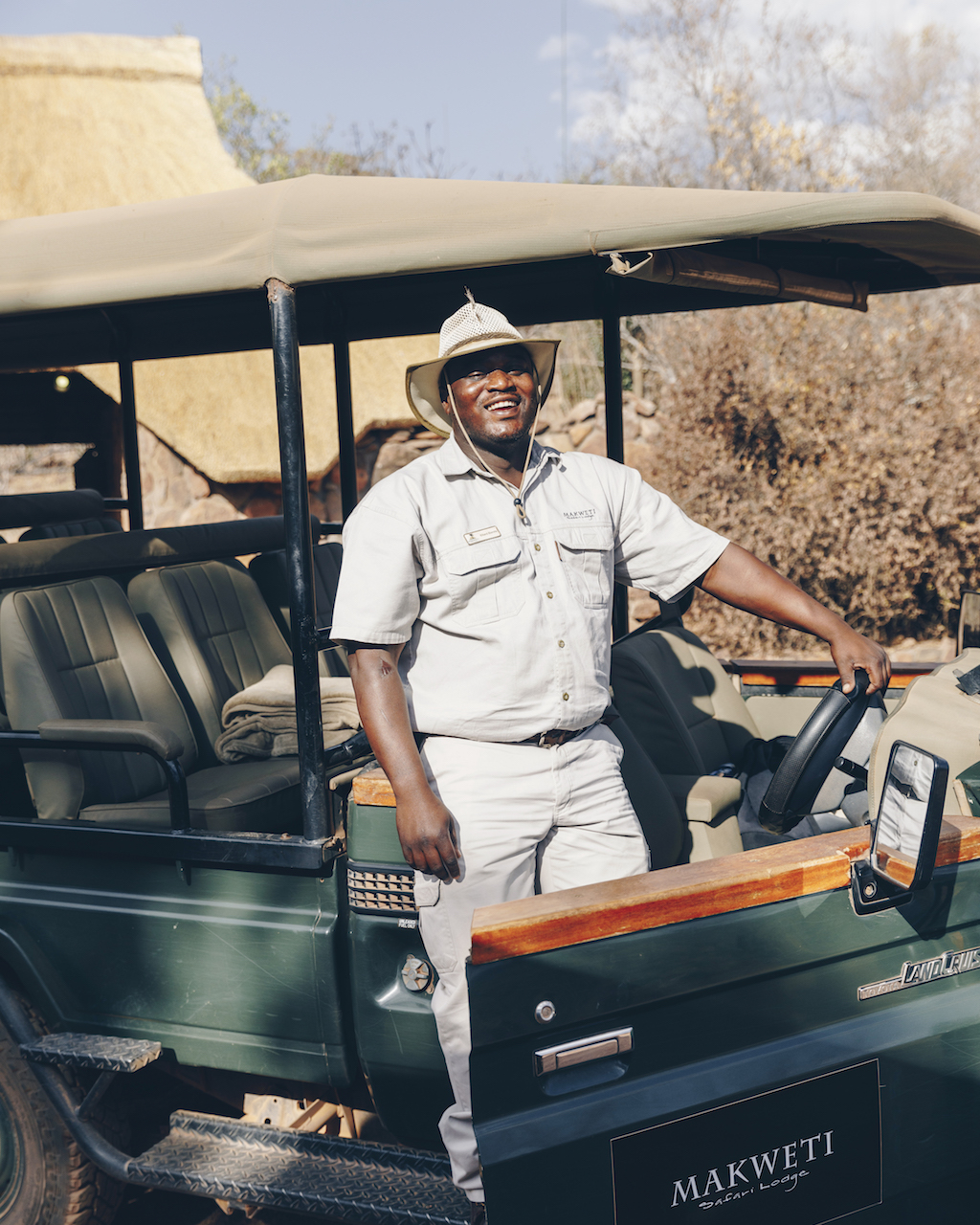
Davison studied botany at the city’s Wits University and his passion for South Africa’s flora and fauna is almost impossible to overstate (just ask him about his collection of twigs sourced from black rhino dung heaps). “With the Wildlife Protection Project, hopefully the animals’ natural instincts can be harnessed to protect each other, and fewer rhinos will be lost to poaching.”
As it is, Welgevonden is already one of the safest places on Earth to be a rhino. The reserve’s reaction manager, 37-year-old Kassie Knoetze, is in charge of security and is understandably cagey about the exact number of black and white rhinos currently on the reserve. However, he will say it’s been over four years since they lost a rhino to poaching – a seriously impressive achievement given the losses being experienced in other parts of the country.
“That’s partly thanks to our remote location, but also because we co-manage a Greater Marakele Security Cluster initiative between Welgevonden, Marakele National Park and the surrounding areas,” explains the stocky ex-fireman, whose easy smile belies a steely resolve when it comes to his work. “They’re our neighbours, not our competitors: We’re a non-profit organisation whose aim is to protect the land and its wildlife. That means you don’t only protect your own land, but that of your neighbours – if everyone does the same, everybody wins. We don’t want to learn lessons in isolation; we want to share them.”
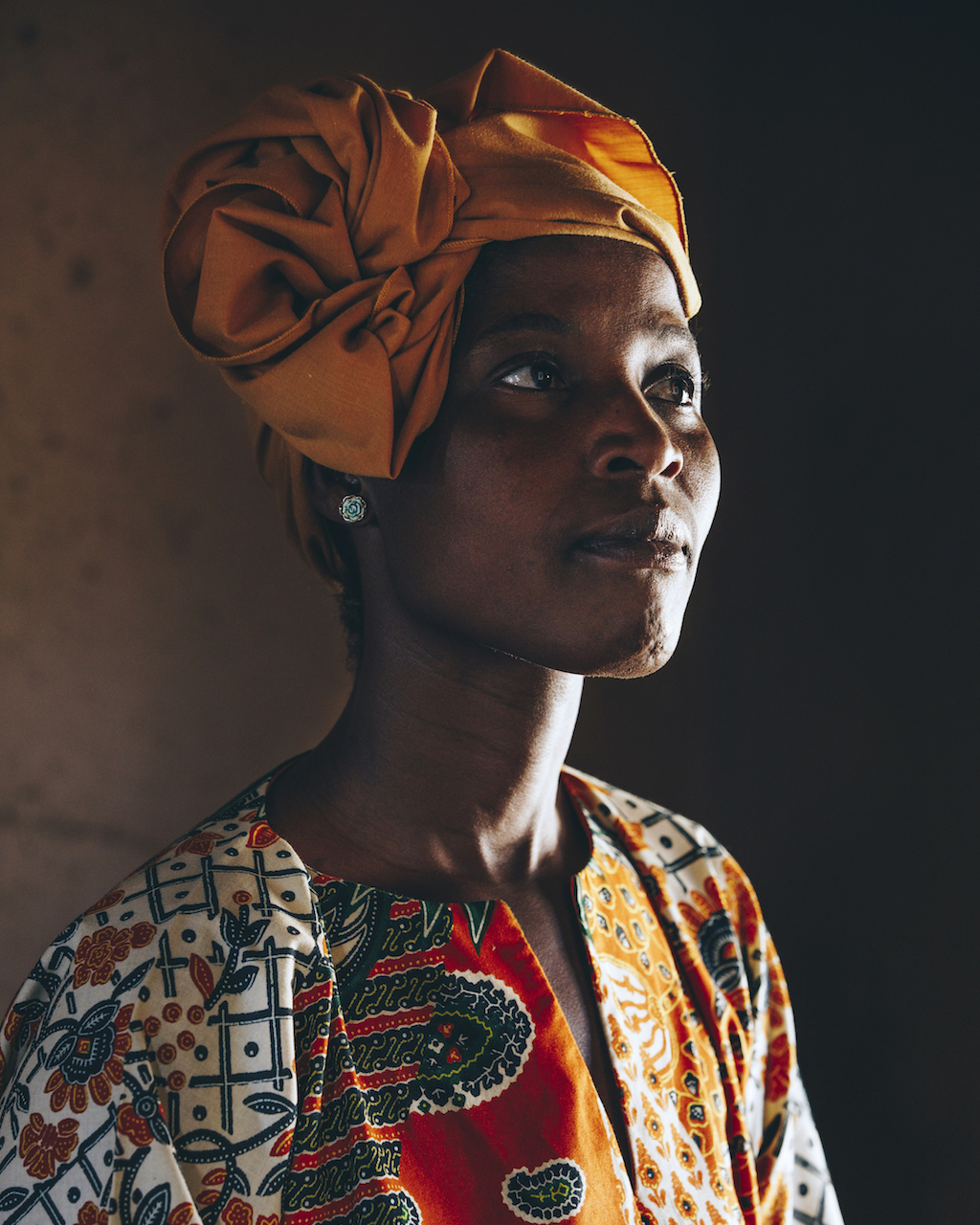
For visitors to the reserve, such topics are second to the thrill of a “big five” safari, and while there are no guaranteed sightings when it comes to wild animals, Welgevonden is such a safe environment for lions, leopards, rhinos, elephants and buffaloes that your chances are good. What’s more, out of the 23 commercial lodges situated in Welgevonden, Makweti is the only one that’s unfenced, meaning the wildlife quite literally comes to you.
On this visit, that includes everything from zebras, warthogs and baboons, who come to drink from the waterhole metres from the Indaba lounge terrace each morning, to a huge bull elephant who wanders into camp one afternoon, grazing on kudu berry trees before making his way to my private plunge pool for a drink.
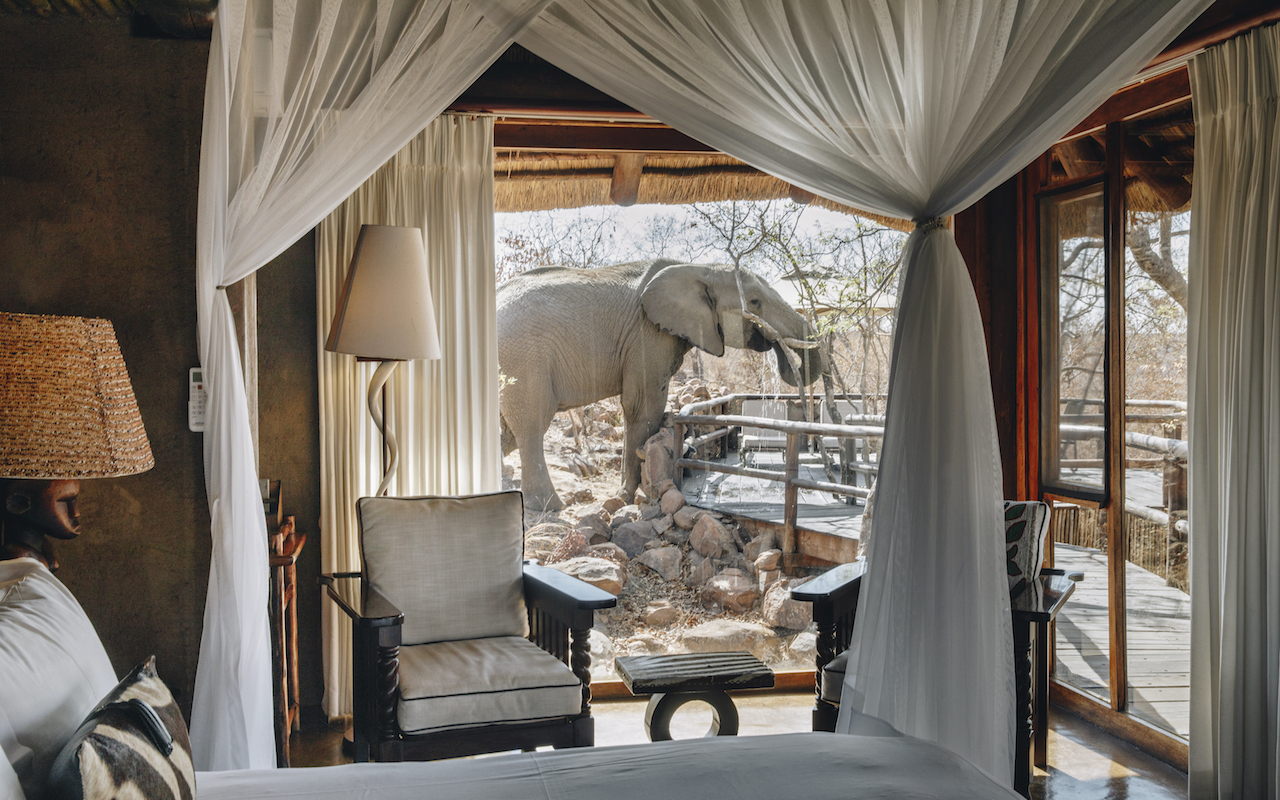
It is this, more than anything, that illustrates Davison’s point on our game drive later that day: “Nature isn’t on our doorstep at Makweti – we are very much on its.” That is exactly the sense you get here: with just five luxurious chalets spread across a hillside and a 10-guest capacity, Makweti has a wonderful aura of total isolation. When we’re not thundering through the bush on game drives, or sipping a fynbos-infused Inverroche gin and tonic as we watch the sun set over the glorious Waterberg landscape, I simply sit on my secluded deck, admiring the wide African skies and dense bush, listening closely for the camp’s next wild arrival.
While we don’t see any of the elusive black rhino during our three days in Welgevonden, the rest of its diverse animal population and the changing landscapes more than make up for it. We drive through leafy valleys past tall Euphorbia trees that look like giant cacti, and traverse rocky hilltops where vervet monkeys play peekaboo with us from parched horn-pod trees. We spot white rhinos, huddling together in long grasses and sleeping in the shade of fig trees, but also cheetahs, giraffes, lions, hippos, springbok, kudu and waterbuck among others.
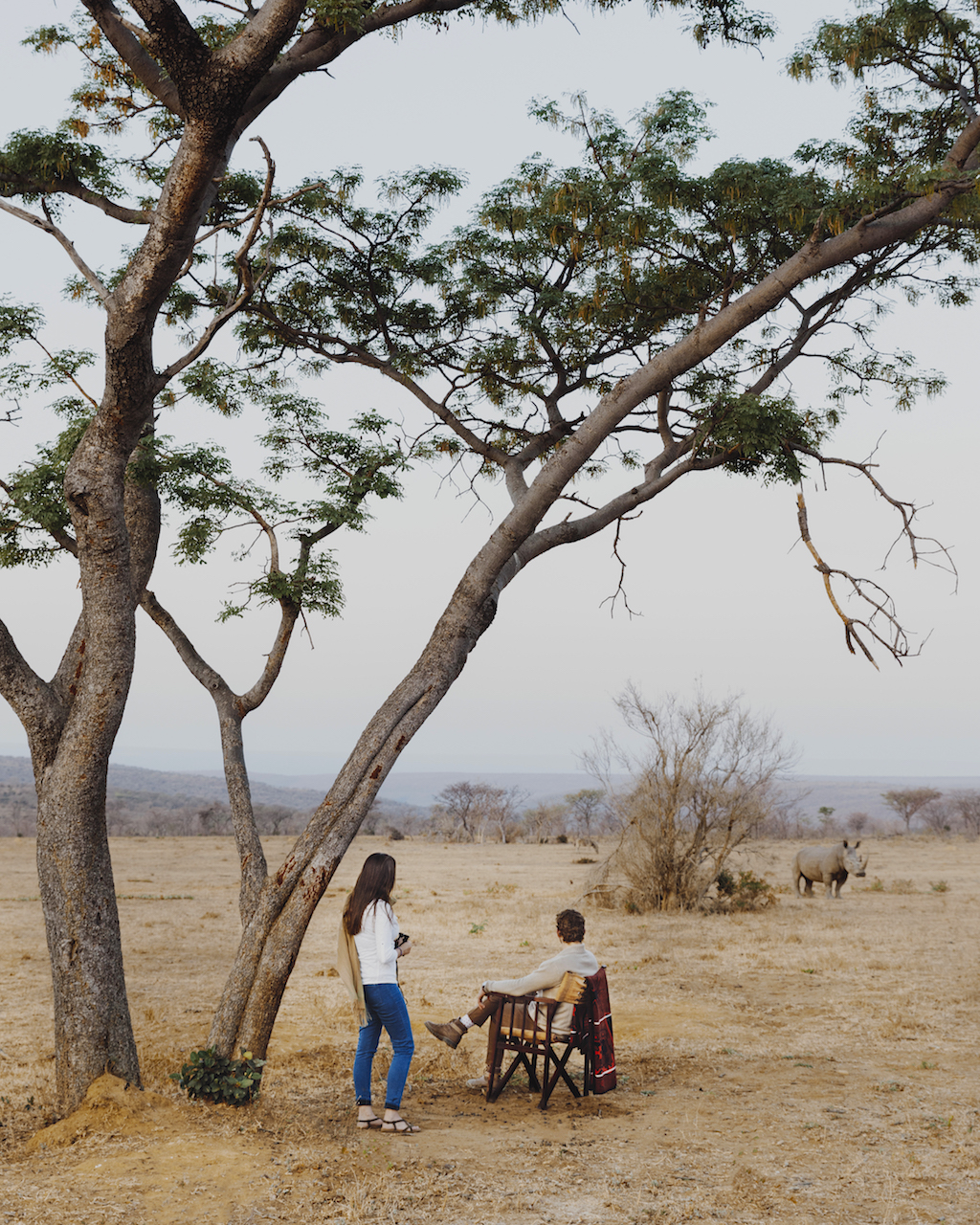
“After all,” Burger tells me as I reluctantly prepare to leave the reserve, “the Wildlife Protection Project isn’t just about saving the rhino. It’s about safeguarding this whole wilderness and helping other parks and reserves across Africa to do the same.”
Hopefully, in doing so, those magnificent grey dinosaurs will continue to roam these savannahs for millennia to come.
A rundown of African Rhinos
Terminology
The word rhinoceros comes from the Greek words rhino, meaning nose, and ceros, meaning horn. The collective noun? A crash of rhinos.
Species
There are five species and 11 sub-species of rhinos. The two found in Africa are the white rhino and black rhino. The other species are found in southern Asia.
Colour
African rhinos are in fact grey: in Afrikaans, “weit” means wide, and it was how white rhinos were described, due to their square mouths.
Stature
White rhinos can grow up to 1.8m tall, weighing up to 2,300kg. The slightly smaller black rhinos grow up to 1.6m tall and weigh up to 1,350kg.
Diet
White rhinos are grazers and eat grass – about 160kg of it a day. Black rhinos are browsers and get most of their food from trees and bushes.
Gestation
Rhinos have a gestation period of 16 months, can reproduce every two and a half to five years and can live for up to 45 years.
Singapore Airlines flies directly to Johannesburg 10 times weekly. To book a flight, visit singaporeair.com
SEE ALSO: From tigers to gorillas: Where to see animals in the wild
This article was originally published in the November 2019 issue of SilverKris magazine
The post Can innovative technology save South African rhinos from extinction? appeared first on SilverKris.
from SilverKris
No comments:
Post a Comment